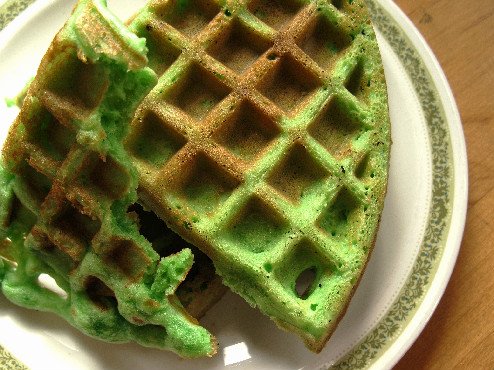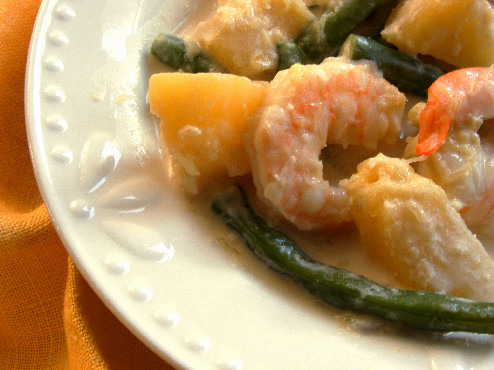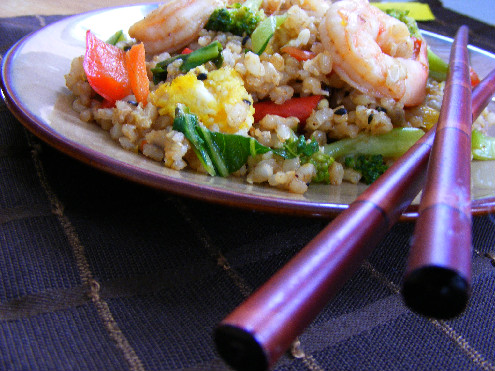Coconut Milk: Vietnamese Waffles – Banh Kep La Dua
Wednesday, March 9th, 2011Sunday is my day to chill out. It’s a leisurely day where I let the pace be what it may–whether it’s sleeping in, reading curled up on the sofa or taking my time folding laundry. Some Sundays I am eager to cook up a feast, never mind that it takes 1 or 4 hours. Other times, laziness sneaks in and I want someone else to break out their pots and pans.
Frequently that someone is New Saigon, my favorite Vietnamese restaurant in Denver.
One of the perks of going there on the weekend is that they now serve waffles. These are not the kind of waffles you’d drench in butter and syrup. They are Vietnamese waffles, banh kep la dua – a sweet treat that is served up by Vietnamese homecooks and street food vendors. It’s eaten naked, like a pastry, and is the perfect dessert after my usual meal of spicy lemongrass chicken and vegetables.
Banh kep la dua are made with coconut milk and pandan. The coconut milk is why the recipe is featured with this series and the reason these waffles are so special.
Pandan is a tropical plant frequently used in Southeast Asian cookery and makes its way into many desserts. You can tell by the signature bright green hue (which is a combination of natural color and added food coloring). Pandan tastes and smells sweet and floral.
Last Sunday was a lazy one. My husband and I had lunch at New Saigon. This time, however, I skipped my regular waffle for the first time in months. Because of you, I’ve been tinkering with recipes for several weeks and am waffled out. I’ve created a recipe for Vietnamese waffles that’s crispy and light like the version I’ve come accustomed to on Sunday afternoons.
Re the recipe: Nearly all the other Vietnamese waffle recipes online use only AP flour (all-purpose) and attempt to get that crispy, light texture by using cornstarch and baking powder or cream of tartar. I found some references to Vietnamese cooks using only rice flour, but that made waffles that were too light and airy. I prefer a combination of the two for a lighter but more structured waffle.
How to eat a Vietnamese Waffle?
The first time I ate banh kep la dua, it was served hot on a plate. I was sharing it with freinds at the table and wasn’t sure how I was going to split it with my chopsticks from lunch. The waitress brought us one fork and, because I still looked perplexed, she quickly quartered the waffle and gave everyone at the table a piece in-hand.
It was and still is the best naked waffle – whether you eat it with . . . a fork, fingers or chopsticks.









